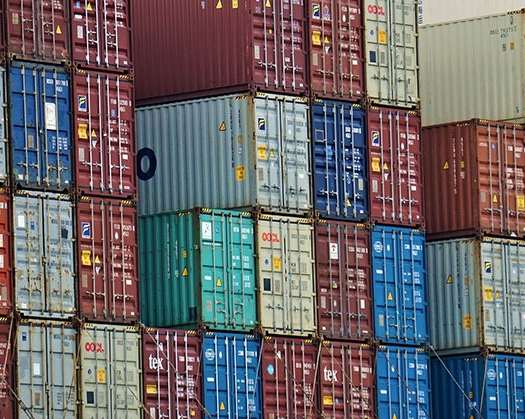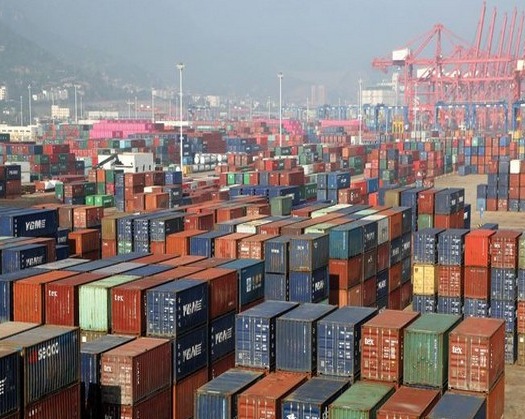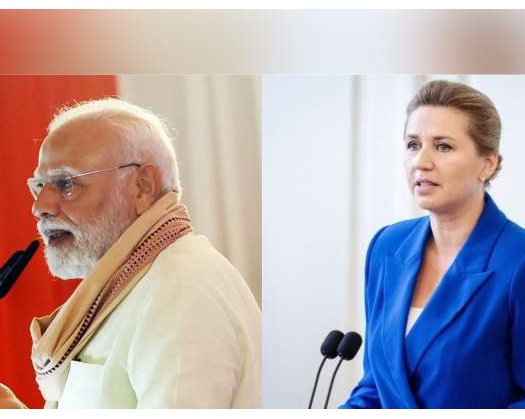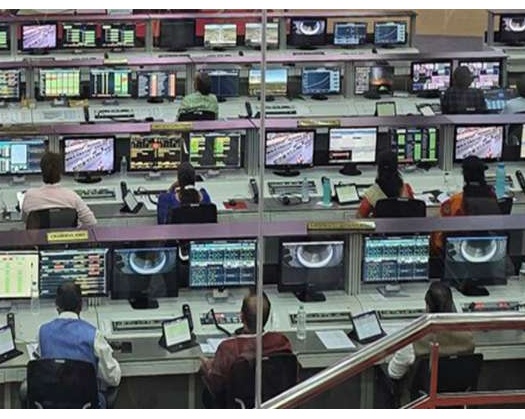New Delhi: India's economic objectives remain unaffected by the current conflict, owing to minimal commercial contact with Israel and Iran and active involvement in infrastructure and technology. As the world navigates an increasingly unpredictable geopolitical environment, India provides a unique combination of economic resilience and policy foresight, solidifying its position as a stable force in the global economy.
In 2025, the global economy remains hampered by geopolitical instability, tariff disputes, and regional-specific conflicts. Amid the turmoil, India stands out, showing resilience and stability in both economic growth and external trade. The escalating conflict in West Asia, particularly between Israel and Iran, has had little or no effect on India's economic trajectory or export performance. The Indian economy has not only withstood external shocks, but it has also displayed positive growth trends across sectors, thanks to strong fundamentals and prudent policymaking.
Indian Economy Remains Stable Amid Global Uncertainty
Despite global uncertainty caused by geopolitical conflicts, trade limitations, and financial stringency in developed countries, the Indian economy continues to grow consistently. According to the most recent statistics, India's GDP rise in the fourth quarter of 2024-25 remains robust, indicating the persistence of a sturdy growth trajectory. The economy has profited from a combination of factors, including macroeconomic stability, efficient fiscal management, and increased domestic demand.
Foreign Direct Investment (FDI) hit a three-year high of 202,425 in 202425, demonstrating strong investor confidence in India's long-term prospects. In the year 202526, April FDI inflows totaled USD 8. 8 billion, with manufacturing and business services accounting for half of the total. At the same time, India's merchandise exports reached an all-time high in 202425, making a positive contribution to the current account and increasing industrial production. India's shipments climbed 2. 7% in May 2025, demonstrating remarkable strength amid global headwinds. Inflation, a major worry for many countries, has drastically decreased in India, reaching a seven-year low due to well-managed food supplies, reduced core inflation, and the Reserve Bank of India's calibrated policy approach.
GST revenues reached an all-time high in May 2025, indicating strong consumption and growth in the formal sector. On the capital markets front, Indian stocks have remained stable amid external challenges, thanks to domestic inflows and rising corporate profits. As India begins the new fiscal year, projections of a healthy monsoon, increased rural demand, and improved credit flows to consumers and producers are expected to bolster growth momentum.
Private Sector Gains and Rural Boost Reinforce Momentum
India's private sector activity jumped in June 2025, reaching a 14-month high, indicating growth in the services and manufacturing industries. The manufacturing Purchasing Managers' Index (PMI) hit 58. 4, while the services PMI rose to 60. 7 — a 10-month high in June 2025. This increase is due to robust domestic demand, rising export orders, and favorable input cost conditions.
Enterprises in both industries recorded not just greater sales and more new export orders, but also increased employment, indicating expanded production capability and confidence in future business opportunities. With inflationary pressures easing, businesses are in a stronger position to maintain pricing power while providing competitive items and services worldwide.
Simultaneously, the rural economy is demonstrating optimistic trends. Kharif sowing had grown by 10% over the previous year, totaling 13. 2 million hectares by June 20, 2025. The improved advance of the monsoon has particularly helped crops such as rice and pulses, providing additional income support for rural households. While cotton planting has decreased somewhat, the overall trend indicates a promising agricultural season.
Strong Outlook for 2025-26 Despite External Headwinds
S&P Global Ratings has increased India's GDP growth projection for FY2025-26 to 6. 5%, citing positive macroeconomic factors such as a normal monsoon, falling global oil prices, and strengthened financial conditions. The report emphasizes that India's growth will continue to be fueled by domestic consumption and investment, even if worldwide exports are slowed by poor external demand.
While the slow worldwide trade climate continues to raise worries, India's well-diversified export portfolio and expanding services trade provide a buffer. Furthermore, the government's ongoing emphasis on infrastructure investment, ease of doing business, and Make in India initiatives is predicted to strengthen the domestic industrial base and boost export competitiveness.
No Impact of West Asia Conflict on India's Exports
Despite the increased tensions between Israel and Iran, there has been no substantial influence on India's exports to West Asia. This continuity may be ascribed to India's efficient port infrastructure, diversified export destinations, and robust bilateral connections.
Concerns regarding crude oil price volatility, which are sometimes attributed to Middle Eastern conflicts, have also been dismissed. Analysts think that short-term increases in oil prices would have little influence on India's macroeconomic stability, particularly given the country's sufficient strategic reserves and hedging strategies. These are temporary, event-driven spikes, and they are unlikely to affect the long-term direction of India's energy or trade policies.
Limited trade exposure to Israel and Iran
A closer examination at India's bilateral trade statistics reveals that India's overall economic exposure to the Israel-Iran conflict remains minimal. India's overall commerce with Israel and Iran in 2024-25 was around $3. 7 billion each, a small portion of India's total trade basket, which surpassed $824 billion in FY 2024-25.
India's exports to Iran mainly consist of rice, engineering goods, and petroleum products. In contrast, exports to Israel are more diversified, including gems and jewelry, engineering goods, and electronic goods. India primarily imports electrical machinery and priceless stones from Israel. Imports from Iran are mostly agricultural and natural products, including fruits, minerals, oil, and chemicals. Given the limited range of imports and exports with these nations, any interruption, even if it occurs, would have only a minor impact on India's overall trade flows.
Strategic Engagement and Regional Connectivity
India's relations with Israel and Iran are neither commercial nor strategically complex. In April 2025, India and Israel signed a modified agriculture cooperation pact aimed at advanced technologies, R&D, and productivity improvement. The agreement's goals include establishing more Centres of Excellence, increasing wateruse efficiency, and improving food processing, all of which have the potential to increase farmer income and product quality.
India's strategic ties with Iran are most clearly demonstrated by the Chabahar Port Project. In May 2024, India and Iran signed a ten-year contract for the management of the Shahid Beheshti terminal at Chabahar Port. Under this arrangement, India Ports Global Limited (IPGL) will invest around USD 120 million in equipment and operations, as well as an extra USD 250 million in credit lines for other infrastructure projects that have been mutually agreed upon.
This collaboration has tremendous potential to improve regional connectivity, particularly to Afghanistan and Central Asia, and to enhance India's presence in the International North-South Transport Corridor (INSTC). Chabahar's increasing importance outweighs any apparent short-term trade disruptions.
Conclusions
In conclusion, India's macroeconomic stability and foreign trade momentum continue to hold firm, notwithstanding the geopolitical upheaval in West Asia. The country has been able to protect itself from the negative external environment via diversification, strategic autonomy, and steady economic reforms. With increased private sector participation, robust agricultural production, resilient exports, and record-high GST receipts, India is well-positioned to maintain its growth trajectory in FY2025-26.









